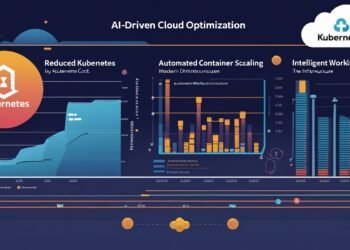The demand for high-performance computing (HPC) is on the rise as organizations seek to process large-scale data, train deep learning models, and run complex simulations. To achieve optimal performance, many enterprises are turning to Kubernetes clusters and GPU cloud computing. These technologies enable efficient workload management, scalability, and significant acceleration of computational tasks.
The Role of Kubernetes in High-Performance Computing
Kubernetes is an open-source container orchestration platform that automates the deployment, scaling, and management of containerized applications. It plays a critical role in high-performance workloads by offering the following benefits:
- Automated Resource Allocation: Kubernetes efficiently distributes workloads across nodes, ensuring optimal utilization of computing resources.
- Scalability: It allows applications to scale dynamically based on demand, ensuring that resources are provisioned as needed.
- Fault Tolerance: Kubernetes maintains workload availability by automatically rescheduling tasks in case of node failures.
- Multi-Cloud and Hybrid Cloud Support: Kubernetes facilitates workload deployment across multiple cloud environments, providing flexibility and resilience.
- Efficient Job Scheduling: Through mechanisms like batch processing and parallel execution, Kubernetes streamlines computational workflows.
The Power of GPU Cloud Computing
Graphics Processing Units (GPUs) have revolutionized computing by significantly speeding up tasks involving massive parallel processing. Cloud providers offer GPU instances that enable organizations to run intensive workloads without the need for costly on-premises hardware.
Benefits of GPU Cloud Computing:
- Accelerated Performance: GPUs can perform thousands of computations simultaneously, making them ideal for deep learning, scientific simulations, and big data analytics.
- Cost-Efficiency: With cloud-based GPU services, organizations can scale resources on-demand, paying only for what they use.
- Flexibility and Accessibility: GPU cloud computing allows teams to access high-performance resources from anywhere, fostering collaboration and remote computing capabilities.
- Seamless Integration with Kubernetes: Modern cloud platforms enable seamless integration of GPU resources within Kubernetes clusters, allowing containerized applications to leverage GPU acceleration.
Combining Kubernetes Clusters with GPU Cloud Computing
The combination of Kubernetes and GPU cloud computing provides an ideal solution for managing and executing high-performance workloads. By running GPU-accelerated applications within Kubernetes clusters, organizations can benefit from:
- Efficient GPU Scheduling: Kubernetes supports specialized schedulers, such as NVIDIA Kubernetes Operator, to allocate GPU resources optimally.
- Containerized Deep Learning Pipelines: AI/ML workflows, including model training and inference, can be orchestrated efficiently within Kubernetes clusters.
- On-Demand Resource Scaling: Kubernetes allows the dynamic scaling of GPU nodes, ensuring efficient resource utilization based on workload intensity.
- Cost-Effective Computing: Running GPU workloads on Kubernetes clusters reduces costs by automating resource allocation and minimizing idle compute time.
Conclusion
Kubernetes clusters and GPU cloud computing are transforming the landscape of high-performance workloads. By integrating these technologies, enterprises can unlock unparalleled efficiency, scalability, and cost-effectiveness. As computing demands continue to evolve, leveraging Kubernetes and GPU-powered cloud infrastructure will be essential for organizations aiming to stay ahead in an increasingly data-driven world.

















